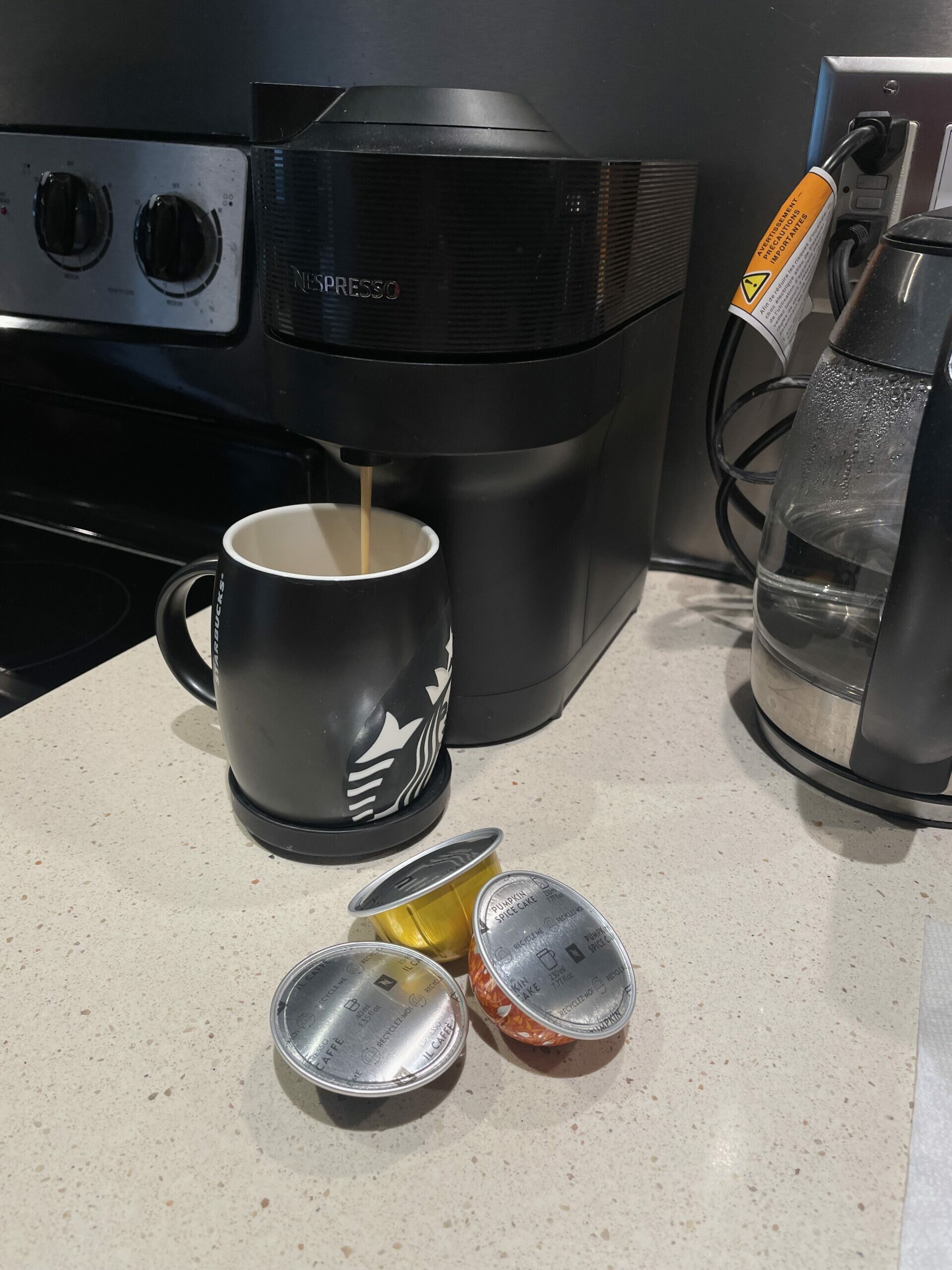
Lausanne, 40 Avenue de Rhodanie, Switzerland
How is it produced?
Nespresso coffee pods first begin their production at the coffee farms which are located in South America, Africa and Asia. According to Nespresso the coffee cherries are hand picked and Nespresso works with “farmers to educate them on the benefits of hand picking as ultimately, this leads to higher quality which in turns ensures a premium price for the coffee they sell. This handpicking means that only the ripe, best tasting coffee is harvested” (Nespresso, 2023). From this point they are brought to Nespresso’s main roasting facilities in Switzerland and roasted and ground before being sealed into the aluminum capsules.
Describe the supply chain to the store shelf in Canada:
The supply chain for the Nespresso pod begins with the picking of the coffee cherries. Once the cherries are picked they are then sent to Nespresso in Switzerland for roasting. All at the same time this is occurring, the recycled aluminum, produced at the Rio Tinto aluminum plant is formed into new coffee pods which are then shipped to one of Nespresso’s three plants in Switzerland. The coffee beans, after being roasted, are then ground into a pounder and sealed into the aluminum pods. According to Nespresso, the use of aluminum pods ensures freshness while preventing moisture from entering (Nespresso, 2023). Once produced, Nespresso Canada places orders of pods that they want to sell at their stores, in my case I shop at the Nespresso store in Metrotown.
What is the power balance between the producer and seller?
The power balance between producer and seller is very large. The small scale coffee farmers only see a fraction of the “total annual sales, over $4.5b”(Fink, 2016). that Nespresso sees and this has impacts on coffee farmers across the Global South. According to Carly Fink, a research scholar for sustainable businesses, “the livelihoods of their suppliers, smallholder coffee farmers, are under threat due volatile market conditions, poverty, environmental degradation, low productivity and unpredictable weather patterns. To protect the future supply of high-quality coffee, Nespresso believed it must help farmers develop sustainable agronomic practices and earn a decent livelihood”(Fink, 2016). The company has partnered with the Rainforest Alliance to help improve the livelihoods of small scale farmers but the gap is still very large.
Can you recommend changes to the system to improve the balance?
While Nespresso has made some positive changes such as joining the Rainforest Alliance and ensuring their coffee is fair trade, the biggest improvement I believe would be to improve the price of coffee per kilogram that farmers receive to improve overall financial returns to the farms. I do believe Nespresso should also donate some money it makes off its coffee sales back to the farms and invest in the communities that it purchase its beans from to improve the livelihoods of the communities. I personally don’t mind paying the extra bit for coffee as long as it supports the coffee growers.
References/Resources:
Bantatua, Luke. (2021). How Much Does the Average Coffee Farmer Make? https://www.coffeedrs.com/blog/how-much-does-the-average-coffee-farmer-make#:~:text=The Research,per kilo) for their beans.
Monaghan, Mitch. (2023). The Alchemy of Coffee: How to Deliver the Highest Quality, Time and Time Again. https://www.nespresso.com/pro/au/en/news-how-our-coffee-is-made#:~:text=Nespresso has developed an exclusive,from air, light and humidity
Fink, Carly. (2016). Nespresso: Supply Chain and Stakeholder Engagement Case Study. Center for Sustainable Business.

